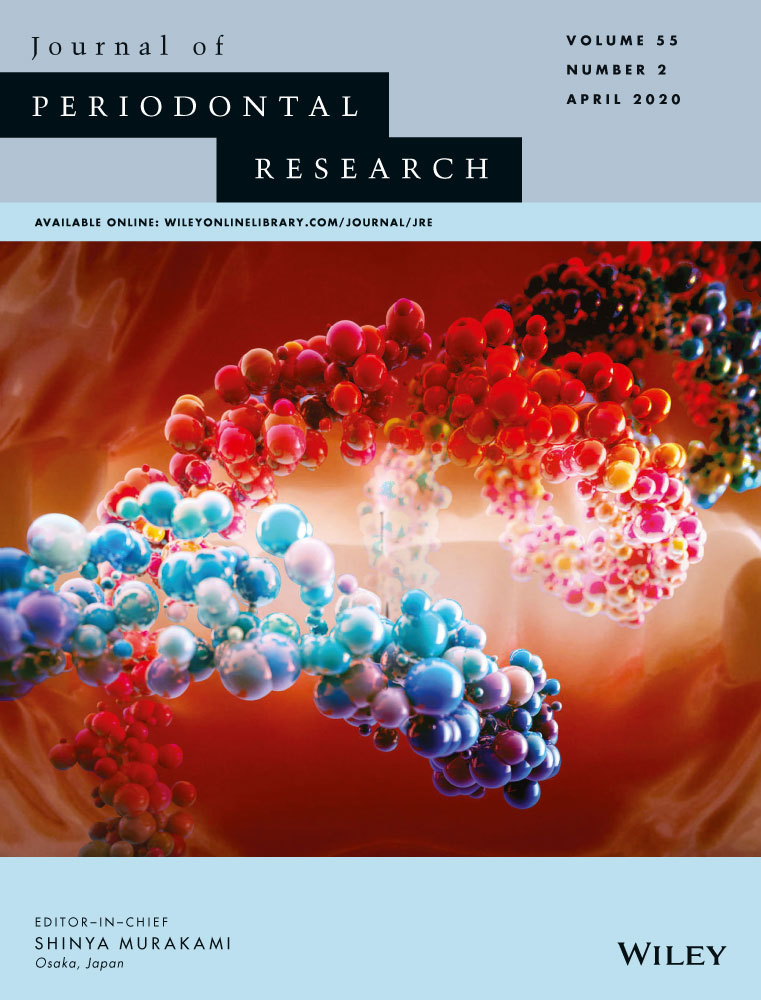Titanium particles and ions favor dysbiosis in oral biofilms
Abstract
Objective
To evaluate the effect of titanium (Ti) particles and ions on oral biofilm growth and composition.
Background
Particles and ions of Ti released from dental implants can trigger unfavorable biological responses in human cells. However, their effect on oral biofilms composition has not been tested.
Methods
In this blind in situ study, volunteers wore a palatal appliance containing Ti disks for 7 days to allow biofilm formation. Disks were then collected and biofilms were treated, in vitro, with Ti particles (0.75% and 1%), ions (10 and 20 ppm), or a combination of both (1% particles + 20 ppm ions). Biofilms exposed only to medium was used as control group. After 24 hours, biofilms were collected and analyzed by checkerboard DNA-DNA hybridization. Direct effects of Ti particles and ions on biofilm/cellular morphology were evaluated by transmission electron microscopy (TEM).
Results
Ti particles affected biofilm composition, increasing population of four bacterial species (P < .05), while Ti ions showed higher levels of putative pathogens from the orange complex with reduction in species from the yellow complex (P < .05), compared with control. The combination of particles + ions increased green complex and reduced yellow complex proportions (P < .05). TEM showed clusters of particles agglomerated in extracellular environment, while Ti ions were precipitated in both extracellular and intracellular sites.
Conclusions
Ti products, especially Ti ions, have the potential to change the microbiological composition of biofilms formed on Ti surfaces. Therefore, the presence of Ti products around dental implants may contribute to microbial dysbiosis and peri-implantitis.
CONFLICT OF INTEREST
The authors declare that there are no conflicts of interest associated with this study.




